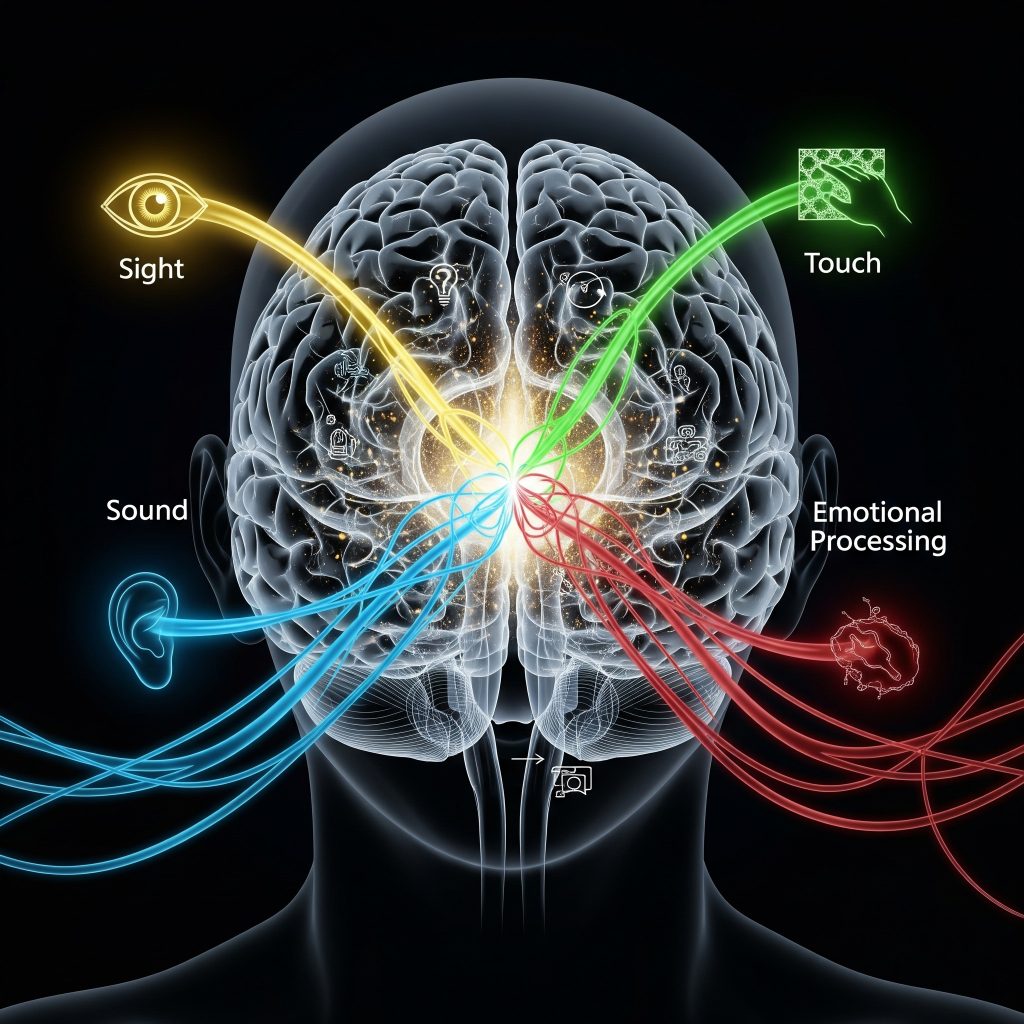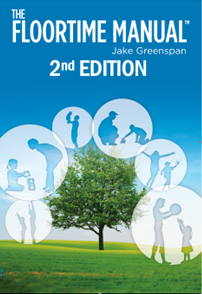(Stanley I Greenspan MD Inc. and its intervention, The Greenspan Floortime Approach®, DO NOT endorse or support ICDL or its DIRFloortime curriculum. Here are some of the reasons why.)


Have you ever wondered how your brain processes the world around you? It’s not just about seeing and hearing things in isolation. A new study, published in Nature Human Behaviour, reveals how the brain is constantly at work, merging what it sees and hears to make quicker, more accurate decisions. This process, a “multisensory integration,” is more profound than simply reacting to the fastest sense. It’s about a dynamic partnership between sight and sound that culminates in our motor system, a model the researchers refer to as “integration,” which proved more effective than the “race” model where one sense simply wins out over another.
Back in the 60’s and 70’s, Jean Ayres first described these processes and created the field of sensory integration. While she highlighted the importance of the social emotional exchange between the therapist and client, and made sure the client was interacting and being socially purposeful within integrated sensory experiences, Dr. Greenspan’s work in the 70’s and 80’s homed in on the integrating force making this all possible, emotions. Dr. Stanley Greenspan’s work focused on understanding how the brain is a “predictive and associative machine,” and it’s constantly trying to make sense of the world by drawing emotional conclusions about every experience we have. These abilities help us navigate the world through anticipating what’s going to happen around us and our responses to it, and connecting the many different elements of each experience, physical and emotional. According to Greenspan’s framework, these abilities to integrate, anticipate, and associate are fundamental to learning and development. He proposed that the very act of integrating multiple streams of sensory information within co-regulated interactions strengthens the neural pathways that are used in self-regulation, communication, and higher-level thinking and planning.
The Developmental View of Sensory Integration
While the neuroscience study focuses on the adult brain’s audio-visual merger, Greenspan’s work highlights the importance of this process from a developmental perspective. His Greenspan Floortime®, a key part of his Developmental, Individual-differences, and Relationship-based (Greenspan/DIR™) model, emphasizes that the way a child processes emotional and sensory information and plans motor actions underlies many behaviors. He believed that the brain’s ability to coordinate these different senses—what we see, hear, touch, and move is not a passive process but an active one, driven by emotions and meaningful interactions.
This perspective reveals a significant link between the laboratory and real-world application. The neuroscience research provides a concrete example of sensory integration in action, while Greenspan’s work offers a framework for nurturing this capacity in children. By creating a playful, engaging environment, Greenspan Floortime® encourages a child to actively explore and integrate their senses. This process, which is driven by internal motivation rather than external rewards, helps the child’s brain build a robust foundation for more complex skills like problem-solving, planning, and communication.
The Power of Integration in Action
Consider the simple act of having a conversation. The neuroscience study suggests your brain is merging the sound of a voice with the visual cues of a person’s emotional facial expressions to process the meaning of what they are saying. Greenspan’s work takes this a step further, explaining that this ability is linked to the brain’s predictive nature, where it anticipates the next word or phrase. This is a testament to the brain’s remarkable plasticity and its ability to reorganize itself throughout life based on experiences.
In essence, both the cutting-edge neuroscience research and the long-standing principles of Dr. Stanley Greenspan’s work arrive at a similar conclusion: the brain’s power lies not in its individual parts but in its ability to seamlessly integrate them. It’s a testament to the idea that our senses are not just separate channels but a single, integrated orchestra, playing in harmony to help us understand and navigate the world.


Unlock the secrets of Dr. Greenspan’s Floortime: Learn to APPLY Greenspan Floortime. Purchase the comprehensive Floortime Manual 2nd Edition and embark on a journey of joyful, meaningful communication with your child